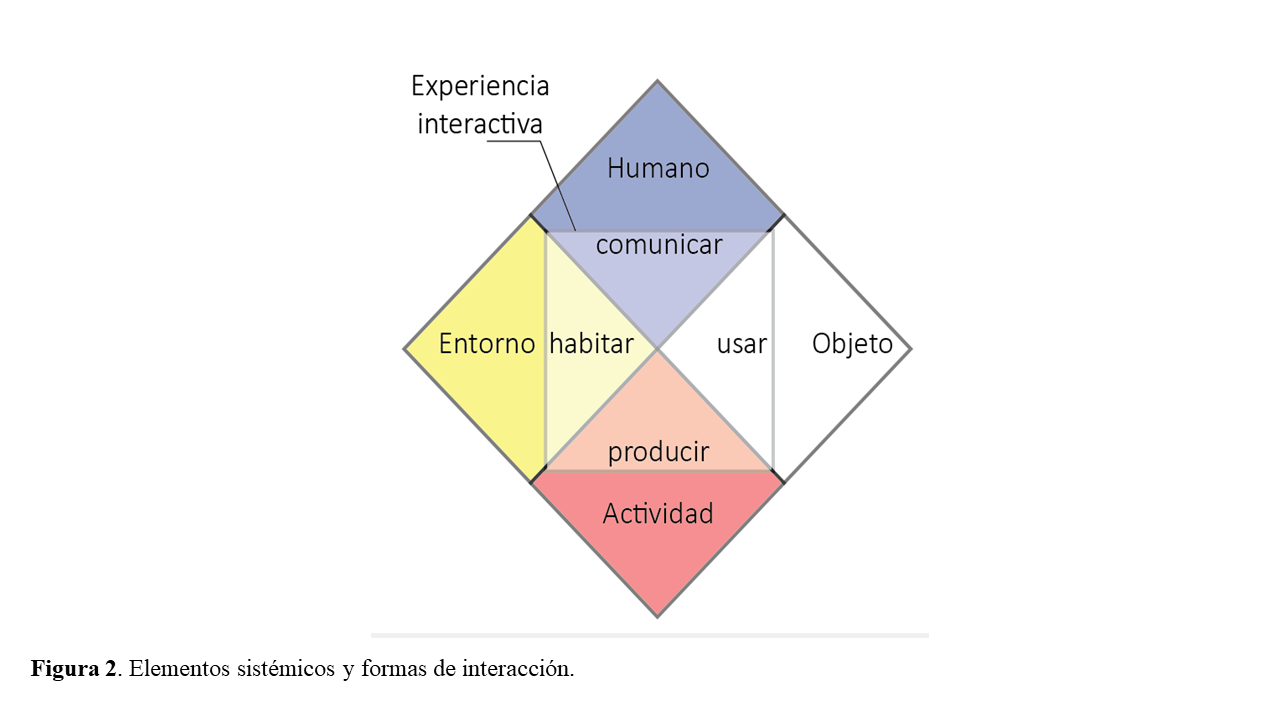Estrategias de diagnóstico de usabilidad para espacios interactivos en ambientes socio-técnicos: una revisión comparativa
DOI:
https://doi.org/10.37636/recit.v24153158Palabras clave:
Espacio interactivo, Diseño Centrado en el Usuario, Usabilidad, Diagnóstico, Sistemas socio-técnicos.Resumen
Este trabajo tiene como intención realizar una revisión comparativa de tres experiencias de diagnóstico de usabilidad para espacios interactivos en ambientes socio-técnicos. La primera, generada para la torre de control de tráfico aéreo del Aeropuerto Internacional de la Ciudad de México (AICM); la segunda, para los talleres de metalmecánica de una empresa particular; y la tercera, para el fraccionamiento de Valle de San Pedro, Tijuana. Dicha comparación pretende determinar qué es un espacio interactivo, cuáles son las cualidades que lo definen, y cómo pueden ser medidas. Para ello se presentarán los tres casos, se contrastarán sus funciones, y se determinarán sus similitudes para detectar las cualidades genéricas de interacción. Con esto se pretende llegar a un entendimiento transdisciplinar para la optimización de los ambientes socio-técnicos, los cuales hasta ahora se han abordado desde la perspectiva de riesgos -ergonómicos, psicosociales y organizacionales-, pero no desde la facilidad de uso, cualidad que abarca más apropiadamente el fenómeno de la interacción y el entendimiento de los requerimientos de usuario. Se espera que el impacto de este trabajo dé mejores pautas para el Diseño Centrado en el Usuario (DCU) en campos de la ingeniería, el diseño de producto, y diseño urbano.Descargas
Citas
D. R. Cheriton, "Man-machine interface design for timesharing systems", Proceedings of the 1976 annual conference. ACM, pp. 362-366. October 1976. https://doi.org/10.1145/800191.805617. DOI: https://doi.org/10.1145/800191.805617
D. A. Norman, "Design rules based on analyses of human error", Communications of the ACM, vol.4, no. 26, pp. 254-258, 1983. https://doi.org/10.1145/2163.358092. DOI: https://doi.org/10.1145/2163.358092
S. L. Smith, and J. N. Mosier, "Guidelines for designing user interface software" (No. MTR-10090). Bedford, MA: Mitre Corporation, 1986. https://doi.org/10.21236/ADA177198. DOI: https://doi.org/10.21236/ADA177198
B. Shneiderman, "Designing the user interface: strategies for effective human-computer interaction". Pearson Education India, 2010. http://www.cs.umd.edu/hcil/DTUI6/. DOI: https://doi.org/10.1145/25065.950626
C. Marlin and L. Brown, "Human-computer interface design guidelines". Ablex Pub.: Norwood, NJ, 1988. https://dl.acm.org/doi/book/10.5555/38160.
C. Flores, "Ergonomía para el diseño". Teoría y práctica Designio. México, 2001. http://upload.no.com.gt/Ergonomia_para_el_dise%C3%B1o.pdf.
J. Johnson, "Designing with the mind in mind: simple guide to understanding user interface design guidelines". Elsevier. 2013. https://www.sciencedirect.com/book/9780124079144/designing-with-the-mind-in-mind#book-info.
C. Rizopoulos, "Implications of Theories of Communication and Spatial Behavior for the Design of Interactive Environments". Intelligent Environments (IE), in7th International Conference. IEEE, pp. 92-99, 2011. https://doi.org/10.1109/IE.2011.57. DOI: https://doi.org/10.1109/IE.2011.57
C.E. Shannon, "A mathematical theory of communication". Bell system technical journal, pp. 379-423, 1948. https://doi.org/10.1002/j.1538-7305.1948.tb01338.x. DOI: https://doi.org/10.1002/j.1538-7305.1948.tb01338.x
A. Murga, "Diagnóstico ergonómico para de estaciones de trabajo industriales: una perspectiva desde el diseño en el noroeste de México". Memorias del 4° Congreso DI-Integra Territorios del Diseño, San Luis Potosí, México, 2019. http://congresos.uaslp.mx/Territorios/Paginas/default.aspx.
A. Murga, "Diagnóstico del Diseño Comunicativo en Estaciones de Trabajo: Caso Torre de Control del Aeropuerto de la Ciudad de México". Universidad Nacional Autónoma de México. México, 2016. http://www.remeri.org.mx/portal/REMERI.jsp?id=oai:tesis.dgbiblio.unam.mx:000744431.
E. Ayala, "Proceso de resiliencia en el espacio rururbano a través de redes sociales: el caso de Valle de San Pedro". Ciudad y sustentabilidad: riesgos urbanos. Editorial UABC, 2019. https://www.researchgate.net/publication/338593546_Procesos_de_resiliencia_en_el_espacio_rururbano_a_traves_de_redes_sociales_El_caso_de_Valle_de_San_Pedro.
N. Bevan, "International standards for HCI and usability". International journal of human-computer studies, vol 4, no. 55, pp. 533-552, 2001. https://doi.org/10.1006/ijhc.2001.0483. DOI: https://doi.org/10.1006/ijhc.2001.0483
O. Hargie, "Skill in theory: Communication as skilled performance". In The handbook of communication skills. Routledge. pp. 9-40, 2018. https://doi.org/10.4324/9781315436135-2. DOI: https://doi.org/10.4324/9781315436135-2
D. A Norman, "Affordance, conventions, and design". Interactions, vol. 3, no. 6, pp. 38-43, 1999. https://doi.org/10.1145/301153.301168. DOI: https://doi.org/10.1145/301153.301168
IEA. "Ergonomics definition". Fecha de acceso 23/04/19. https://www.iea.cc/whats/.
Abras, C. "User-centered design. Bainbridge, W. Encyclopedia of Human-Computer Interaction". Thousand Oaks: Sage Publications, 37(4), 445-456, 2004. http://citeseerx.ist.psu.edu/viewdoc/summary?doi=10.1.1.94.381.

Publicado
Cómo citar
Número
Sección
Categorías
Licencia
Derechos de autor 2020 Alejandro Daniel Murga González, Elvia Guadalupe Ayala Macías, Vladimir Becerril Mendoza, Karina Rosas Burgos, Alberto Almejo Ornelas

Esta obra está bajo una licencia internacional Creative Commons Atribución 4.0.
Los autores/as que publiquen en esta revista aceptan las siguientes condiciones:
- Los autores/as conservan los derechos de autor y ceden a la revista el derecho de la primera publicación, con el trabajo registrado con la licencia de atribución de Creative Commons 4.0, que permite a terceros utilizar lo publicado siempre que mencionen la autoría del trabajo y a la primera publicación en esta revista.
- Los autores/as pueden realizar otros acuerdos contractuales independientes y adicionales para la distribución no exclusiva de la versión del artículo publicado en esta revista (p. ej., incluirlo en un repositorio institucional o publicarlo en un libro) siempre que indiquen claramente que el trabajo se publicó por primera vez en esta revista.
- Se permite y recomienda a los autores/as a compartir su trabajo en línea (por ejemplo: en repositorios institucionales o páginas web personales) antes y durante el proceso de envío del manuscrito, ya que puede conducir a intercambios productivos, a una mayor y más rápida citación del trabajo publicado (vea The Effect of Open Access).











